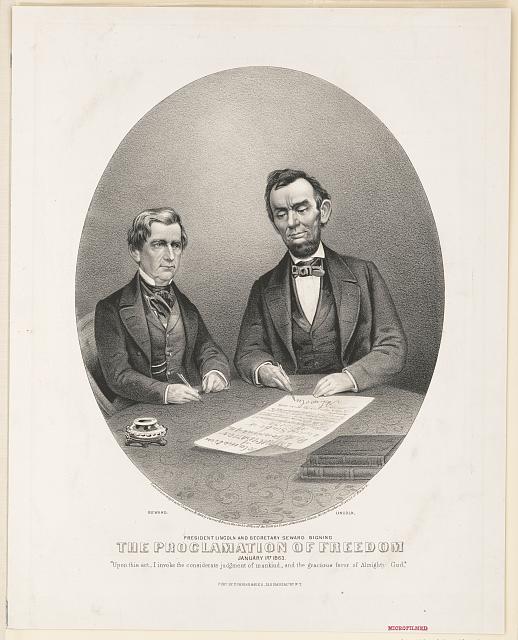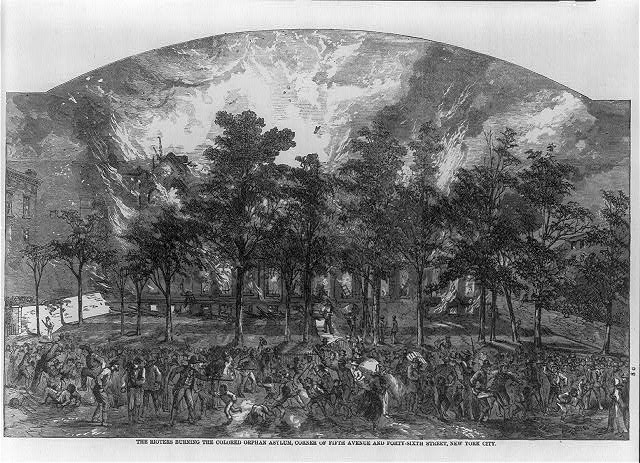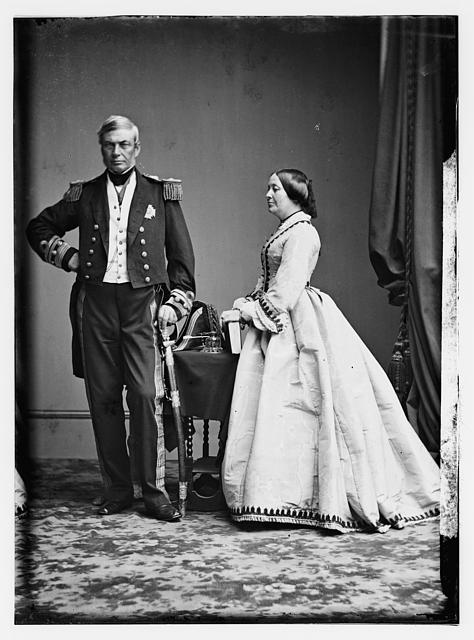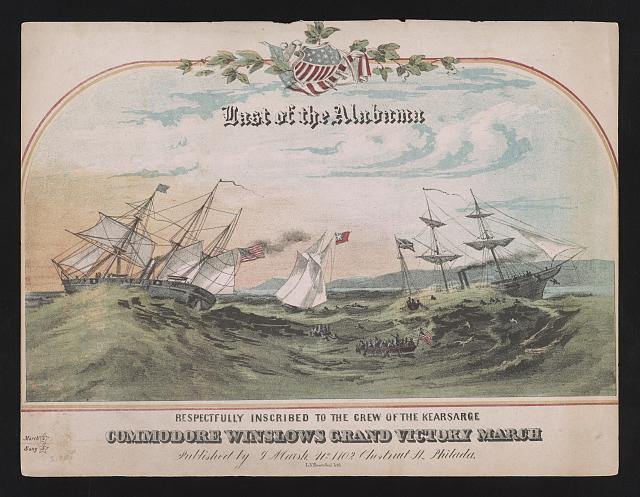The turning point of the war began with the expansion of Union war aims to included emancipation interests. Questions still surrounded the extent of the Emancipation Proclamation’s effect. Direct action providing the freedom and rights of the South’s slave population still had to wait till the end of the war and the beginnings of Reconstruction. However, President Lincoln’s move represented an important shift in international perception of the conflict, bolstered by the military developments favoring the Union.
Increasingly, the Confederacy found itself unable to hold off Union advances. Not only were the military campaigns turning against them, diplomatic efforts continued to produce few results. Increasingly, interest in intervening on the South’s behalf, or as a neutral party, waned in Europe.

Lincoln’s Emancipation Proclamation
Signed by President Lincoln and Secretary Seward, the official day given by the President for of implementation of the Proclamation arrives. Its immediate effects are limited to areas of the South already occupied by the Union, though it proclaims all slaves of the South freed. As a result, few slaves are directly freed as a result of Lincoln’s action, though it inspires many to attempt freeing themselves. The driving themes of the Proclamation – liberty and freedom – have a further impact, influencing foreign public perception of the Union war effort over the remainder of the conflict.
(Image courtesy of the Library of Congress)
Battle of Gettysburg
The first of two pivotal moments for the war in the summer of 1863, the three day battle turned back the northern most advance by a Confederate Army. In stopping the invasion of Pennsylvania by forces under General Robert E. Lee, the Confederacy ability to wage a war outside of its own territory grew increasingly limited.
Siege of Vicksburg Ends
Coinciding with the Battle of Gettysburg, the Union siege of Vicksburg, Mississippi ended with the capture of the city. Its position along the Mississippi River made it important to any effort to control the waterway, with Vicksburg the last remaining obstacle to the Union. It’s fall completed an important part of the Anaconda Plan, splitting the Confederacy and preventing them full access to the River.

New York City Draft Riots
Witnessed by foreign onlookers, such as British Lt. Colonel Arthur Fremantle, the New York City Draft Riots begin in response to changes in Union conscription for the war effort. Intensified anger among the city’s immigrant communities, particularly the Irish, drove mobs and rioting over the course of several days. Social and racial animosity further fed unrest, as the rioters began to target black communities and individuals throughout the city. News of these events led to questions of the North regarding race in society, even as it took steps towards emancipation.
(Image courtesy of the Library of Congress)
Seizure of the Laird Rams
Union anger over the continued action of the Alabama and other British-built Confederate vessels drove American Minister Adams to place further pressure upon Lord Russell and the Admiralty to crack down on further projects. Taking action, The government intervened in the work of the Laird shipyards, where the Alabama had been built. Two ironclad ships, part-way through their own construction, were seized, later being repurposed for use in the British Royal Navy.

Rear Admiral Milne’s Tour
In a goodwill visit aimed to promote friendship between Britain and the U.S., the HMS Nile, the flagship of British Rear Admiral Alexander Milne arrives in New York City’s Harbor. Pictured above with his wife Euphemia, Milne’s visit to New York is overshadowed by the presence of Russian warship, that vessel part of Russian efforts to secure its fleet under the guise of improving its own relations with the US. The Admiral’s later stop in Washington D.C. receives greater public attention.
(Image courtesy of the Library of Congress)
The Chesapeake Affair
In a plot carried out by a sympathetic group of Canadians from the Maritime Provinces, an American steamship – the Chesapeake – was captured off of Cape Cod. The conspirators, unable to bring the ship further south to the Confederacy, were pursued into Nova Scotian waters by Union warships. Caught, some of the crew fled, while the remainder were taken prisoner, setting off a brief debate over the legality of the action. Later deemed to have constituted an act of piracy, an escalation was avoided.

Sinking of the Alabama
Pursued by Union ships since returning to the Atlantic after a cruise in the Far East, the Alabama is sunk in battle off the coast of Cherbourg, France. With her sinking, the victor of the Battle of Cherbourg, the USS Kearsarge, moves to take survivors aboard. Part of the Alabama’s crew, including Captain Raphael Semmes, are rescued by the sympathetic crew of a nearby British vessel, the Deerhound. Taking them back to Britain, their capture by the Union is prevented.
(Image courtesy of the Library of Congress)
The St. Albans Raid
Organized from the Canadian side of the border, Confederate agents and sympathizers attack St. Albans, Vermont. Robbing banks and killing one resident, their escape back to Canada – and the impediments to their later prosecution – lead to questions of the Canadian position.
The New York City Plot
In another plot by Confederates operating in Canada, under Confederate Secret Service leader Jacob Thompson, agents planned to strategically set fire to buildings throughout New York City. With the intent to cause fear and panic, the conspirators again were able to cross the border and carry out their plan. Though it ended in failure, only causing minor fire damage, the agents were able to escape immediate prosecution.